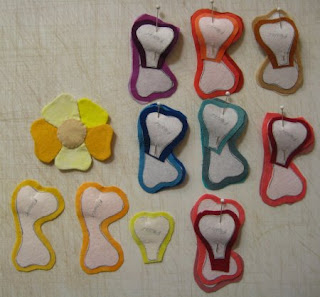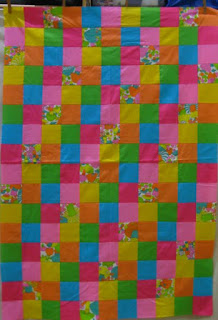Catching up on what I've been doing and working on ...
It all started when Mr. Pirate needed the remote control to our TV monitor. He couldn't find it. *I* couldn't find it. And I strongly suspected that it was hiding underneath all the quilting stuff on the adjacent window shelf.
That window shelf had slowly been accumulating STUFF for a very long time and had eventually become quite cluttered. Well .. *really* cluttered, if you want to be truthful. I have a high tolerance for clutter but even this level of disorganization was getting on my one remaining nerve.
So, I bit the bullet and began digging through the piles and piles and piles of quilting stuff and projects and magazines and books and everything else .. all in the hopes of finding the remote. When I'm cleaning/reorganzing, I kinda/sorta use the "touch once" rule, which is to say that you handle the item ONCE ... putting it where it belongs .. and the returning to the area being cleaned. You don't put it in a pile to be dealt with later .. that just invites more disorganization.
Well, I hadn't gone through too many piles when I FOUND the remote! Oh hooray! But now, I had a conundrum ... do I continue cleaning and putting things where they actually belong? Or do I go back to what I was working on before (and leaving the existing piles of clutter alone)? It was a real temptation to return to what I was doing before ...but .. by golly, I really was on a roll with this cleaning effort! Ultimately, I continued with that ..... and rediscovered quite a few quilting projects that had been put on hiatus .. and never gotten back to.
So, I bit the bullet and began digging through the piles and piles and piles of quilting stuff and projects and magazines and books and everything else .. all in the hopes of finding the remote. When I'm cleaning/reorganzing, I kinda/sorta use the "touch once" rule, which is to say that you handle the item ONCE ... putting it where it belongs .. and the returning to the area being cleaned. You don't put it in a pile to be dealt with later .. that just invites more disorganization.
Well, I hadn't gone through too many piles when I FOUND the remote! Oh hooray! But now, I had a conundrum ... do I continue cleaning and putting things where they actually belong? Or do I go back to what I was working on before (and leaving the existing piles of clutter alone)? It was a real temptation to return to what I was doing before ...but .. by golly, I really was on a roll with this cleaning effort! Ultimately, I continued with that ..... and rediscovered quite a few quilting projects that had been put on hiatus .. and never gotten back to.

Upon our return home, the pillowcase project was deferred "for a while" .. which means it never was made. But, during this cleaning/excavation project, I rediscovered it! Now, pillowcases really do not take very long to make, so I was very pleased when I finished both pillowcases! I even remembered to sew my little embroidered pirate tag into them! Hooray!
Another project was a set of cloth napkins that I had intended on using for Thanksgiving *2014*. I had read a blog entry that described how to decorate napkins with English paper pieced turkeys .. they were absolutely DARLING. At that time (in 2014), I was really into making hexies using the English paper piecing technique and I JUST KNEW that I could make 12 napkins to use that Thanksgiving .. even though it was only 2 weeks away. Honestly .. how long could it possibly take me?
Well, suffice it to say that I did NOT finish them for Thanksgiving 2014. BUT .. since the project had now been rediscovered, I could resume working on them for Thanksgiving 2015! And I did! Hooray!
I'm backing this lap quilt with a gorgeous length of royal blue fleece. I'm going to have a wonderfully cozy personal-sized quilt for me! Hooray!
I feel quite wonderful that I was able to finish *3* projects in fairly short order .. although, since they had been buried for a very long time, they hadn't even made it to my UFO board. I don't get the satisfaction of crossing them off .. BUT .. I do have the enormous satisfaction of the completed projects!














































